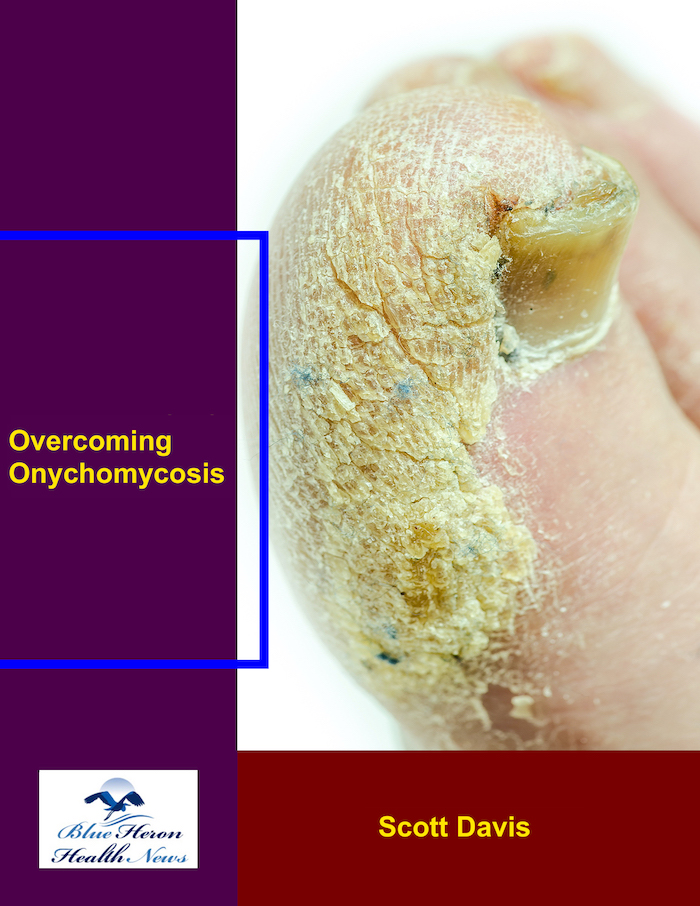
Overcoming Onychomycosis™ By Scott Davis It is a simple, natural, and all-in-one solution for onychomycosis. The program can help you to treat your nail fungus naturally. Once you follow this program, you do not need to spend on expensive treatments to prevent a recurrence. In brief, you can have a proven solution for your chronic nail fungus. Besides, the program is easy to follow, and most users find it effective against onychomycosis.
What are the best practices for nail care to prevent onychomycosis?
Preventing onychomycosis (a fungal infection of the nails) involves adopting good nail care habits that reduce the risk of fungal infections and maintain overall nail health. Here are the best practices for nail care to help prevent onychomycosis:
1. Keep Nails Clean and Dry
- Daily Cleaning: Regularly wash your hands and feet with soap and water, and ensure the areas around the nails are clean. Gently clean under the nails to remove dirt, debris, and possible fungal spores.
- Thorough Drying: After washing, swimming, or sweating, make sure to dry your hands and feet thoroughly, especially between the toes. Fungi thrive in moist environments, so keeping the nails and surrounding skin dry is essential for preventing infection.
2. Trim Nails Properly
- Regular Trimming: Keep your nails trimmed and neat to minimize the risk of fungal buildup under the nails. Trim toenails straight across to avoid ingrown nails, which can increase the risk of infection.
- File Thickened Nails: Onychomycosis often causes nails to thicken, making them harder to maintain. Regularly filing down thickened nails can help reduce pressure on the nail and prevent injury.
- Use Clean, Sharp Tools: Always use sanitized nail clippers or scissors, and avoid tearing or biting your nails, which can cause injury and open the door to fungal infections.
3. Avoid Nail Trauma
- Protect Nails from Injury: Wear properly fitting shoes that provide adequate space for your toes, avoiding pressure or trauma that can weaken the nails. Injured nails are more susceptible to fungal infections.
- Be Cautious with Pedicures: When getting professional nail care, ensure the salon follows proper sanitation procedures. Bring your own tools if possible, and avoid salons that do not properly disinfect their equipment between clients.
4. Wear Breathable Footwear
- Breathable Shoes: Choose shoes made from breathable materials like leather or mesh to allow air circulation, which helps keep your feet dry and reduces moisture buildup.
- Alternate Footwear: Rotate between different pairs of shoes to allow each pair to air out between uses, reducing the accumulation of moisture.
- Moisture-Wicking Socks: Wear socks made of moisture-wicking fabrics, such as cotton or wool blends, that help absorb moisture and keep your feet dry. Change your socks regularly, especially if your feet become sweaty.
5. Avoid Going Barefoot in Public Areas
- Foot Protection: In public places like gyms, pools, locker rooms, and showers, always wear flip-flops or water shoes to avoid exposure to fungi, which can thrive in warm, moist environments.
6. Use Antifungal Products When Needed
- Antifungal Powders or Sprays: If you’re prone to fungal infections, regularly applying an antifungal powder or spray to your feet and inside your shoes can help reduce the risk of fungal growth.
- Antifungal Creams: For individuals with sweaty feet or those frequently exposed to moist environments, using antifungal creams can offer an additional layer of protection.
7. Avoid Sharing Personal Nail Care Items
- Personal Tools: Do not share nail clippers, nail files, or any other personal grooming tools with others, as fungal infections can spread through shared instruments.
- Disinfect Tools: Regularly disinfect your nail care tools with alcohol or an antiseptic solution to kill any fungi or bacteria that may have been transferred during use.
8. Manage Sweaty Feet
- Use Foot Powder: If you have sweaty feet, consider using a foot powder that contains moisture-absorbing ingredients. This will help keep your feet dry and less hospitable to fungal growth.
- Change Socks Often: Wear moisture-wicking socks and change them at least once a day, or more often if your feet become sweaty.
9. Be Cautious with Nail Polish and Acrylic Nails
- Avoid Prolonged Use: Prolonged use of nail polish or acrylic nails can trap moisture under the nail, creating an environment conducive to fungal infections. Allow your nails time to breathe between polish or artificial nail applications.
- Use Breathable Polish: If you must use nail polish, opt for breathable formulas that allow some airflow to the nail bed, reducing moisture buildup.
- Gentle Removal: Avoid aggressive removal of nail polish or acrylic nails, as this can damage the nail bed and make it more susceptible to fungal infections.
10. Practice Good Foot Hygiene
- Regular Foot Soaks: Soaking your feet in warm water (optionally with Epsom salt) can help soften nails and remove dirt. Be sure to dry your feet thoroughly afterward.
- Moisturize Carefully: While it’s important to keep the skin around your nails moisturized to prevent cracks (which can invite fungal infections), avoid over-moisturizing, especially between the toes.
11. Monitor Nail Health
- Regular Inspection: Periodically inspect your nails for any signs of fungal infection, such as yellowing, thickening, or crumbling. Early detection of onychomycosis is key to successful treatment.
- Seek Early Treatment: If you notice any signs of infection, such as changes in nail color, texture, or separation from the nail bed, consult a healthcare provider early. Treating the infection in its early stages prevents it from worsening or spreading to other nails.
12. Strengthen Your Immune System
- Healthy Lifestyle: A healthy immune system is crucial for fighting off infections, including fungal infections. Eat a balanced diet rich in vitamins and minerals, exercise regularly, and avoid smoking to support immune health.
- Manage Chronic Conditions: Certain conditions like diabetes, poor circulation, or a weakened immune system increase the risk of onychomycosis. Properly managing these conditions can reduce your risk of fungal infections.
Conclusion:
Good nail hygiene and preventive care are essential for avoiding onychomycosis. Keeping nails clean, dry, and trimmed, wearing breathable footwear, avoiding shared nail tools, and being cautious in public places are key strategies to prevent fungal infections. Regular inspection and prompt treatment of any nail issues are important steps in maintaining healthy nails and reducing the risk of onychomycosis.
Overcoming Onychomycosis™ By Scott Davis It is a simple, natural, and all-in-one solution for onychomycosis. The program can help you to treat your nail fungus naturally. Once you follow this program, you do not need to spend on expensive treatments to prevent a recurrence. In brief, you can have a proven solution for your chronic nail fungus. Besides, the program is easy to follow, and most users find it effective against onychomycosis.
